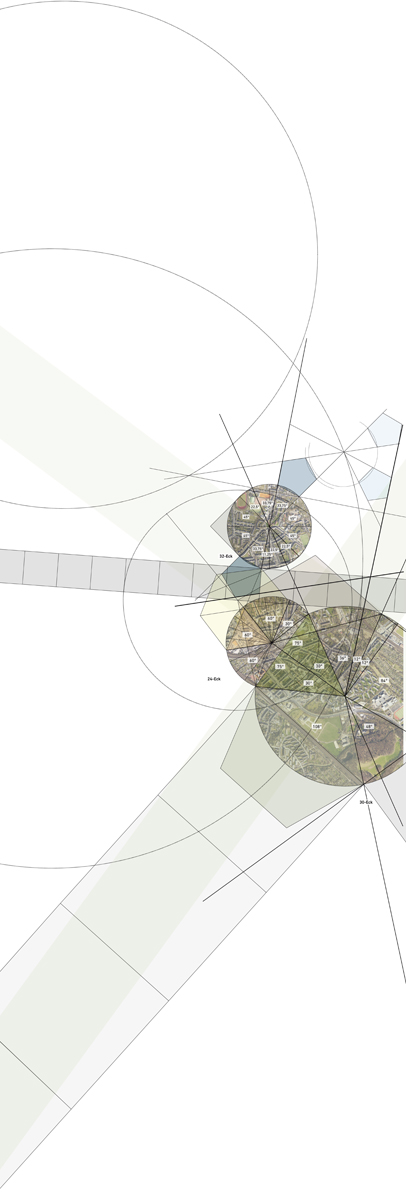‘Turnstile’ – an interactive installation

On the front wall of the Schadowstrasse underground station, an LED wall displays a generative video. In front of the wall, a light shaft extends to the surface of the plaza where a video camera is set up. The camera continuously films passing pedestrians on the plaza and streams the feed to a specially developed generative software application (coded by Felix Bonowski) which derives proposed geometries for structures based on the movement patterns of the pedestrians. These interpretations of the real-time video generate new geometries for the location and propose axes and parcels.
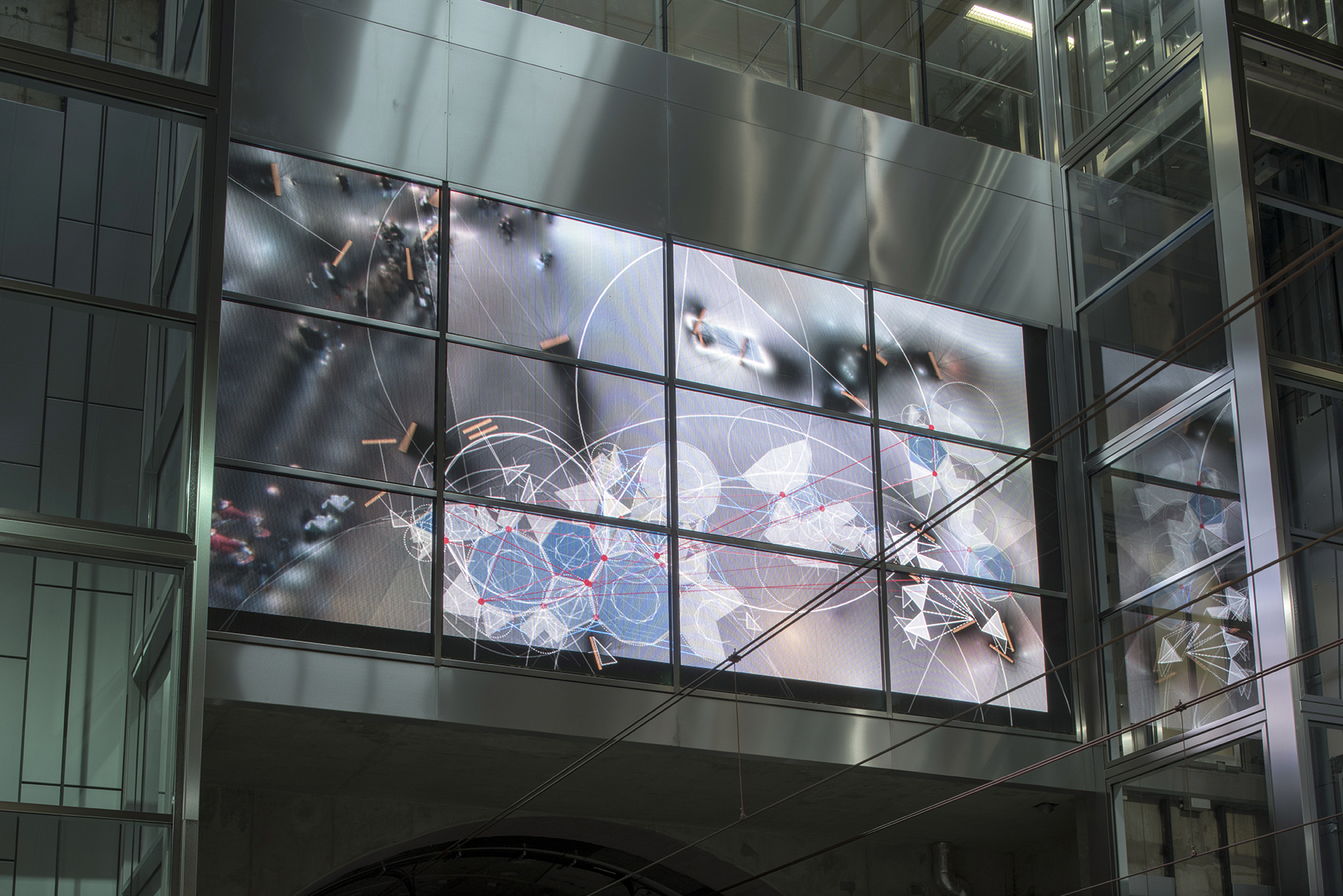
Two elevators, to the left and right of the large video image, lead from the plaza to the rail platform.
Pattern drawings on aerial photos of Düsseldorf, Schadowstrasse
Turnstile (Drehkreuz) from resoutionable on Vimeo.
On the platform, the geometric structures can be heard as a sound interpretation (by Yunchul Kim). At the centre of the artistic intervention is the video image and its artistic concept. The concept is reflected in the design of the entrance areas. Plates are inserted in the blue glass of the underground station at 21 locations, which display geometries over districts of Düsseldorf.
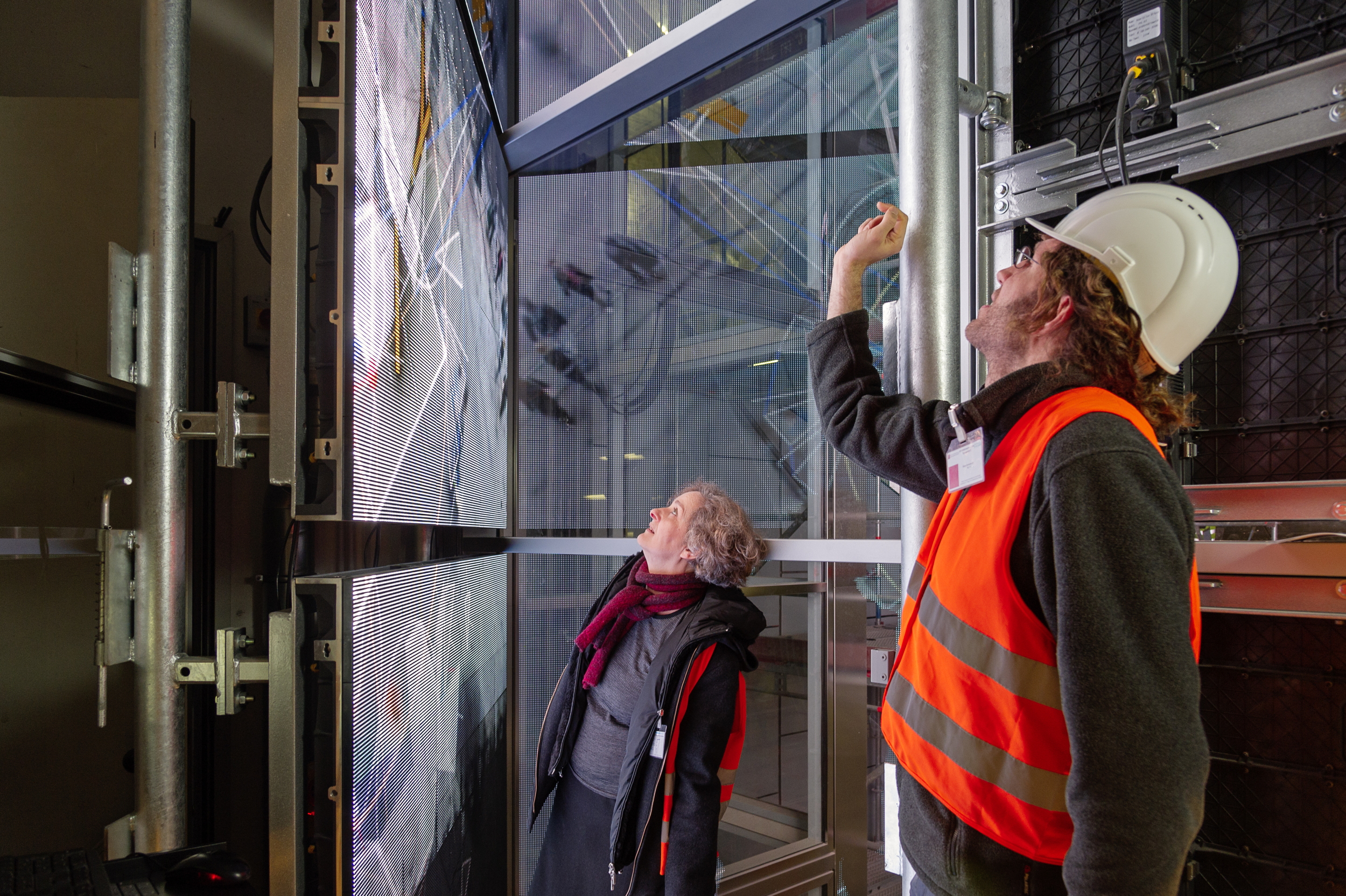

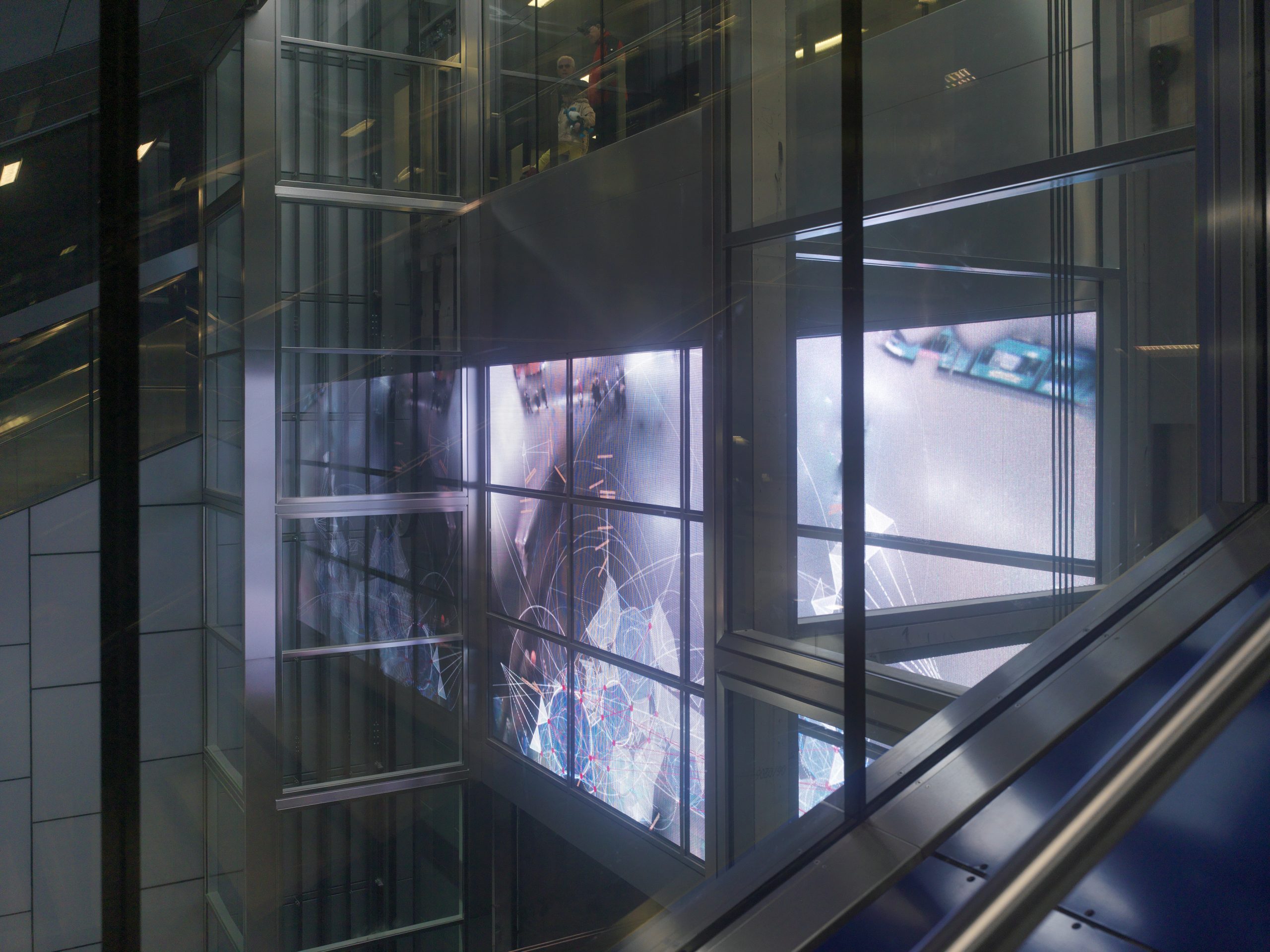
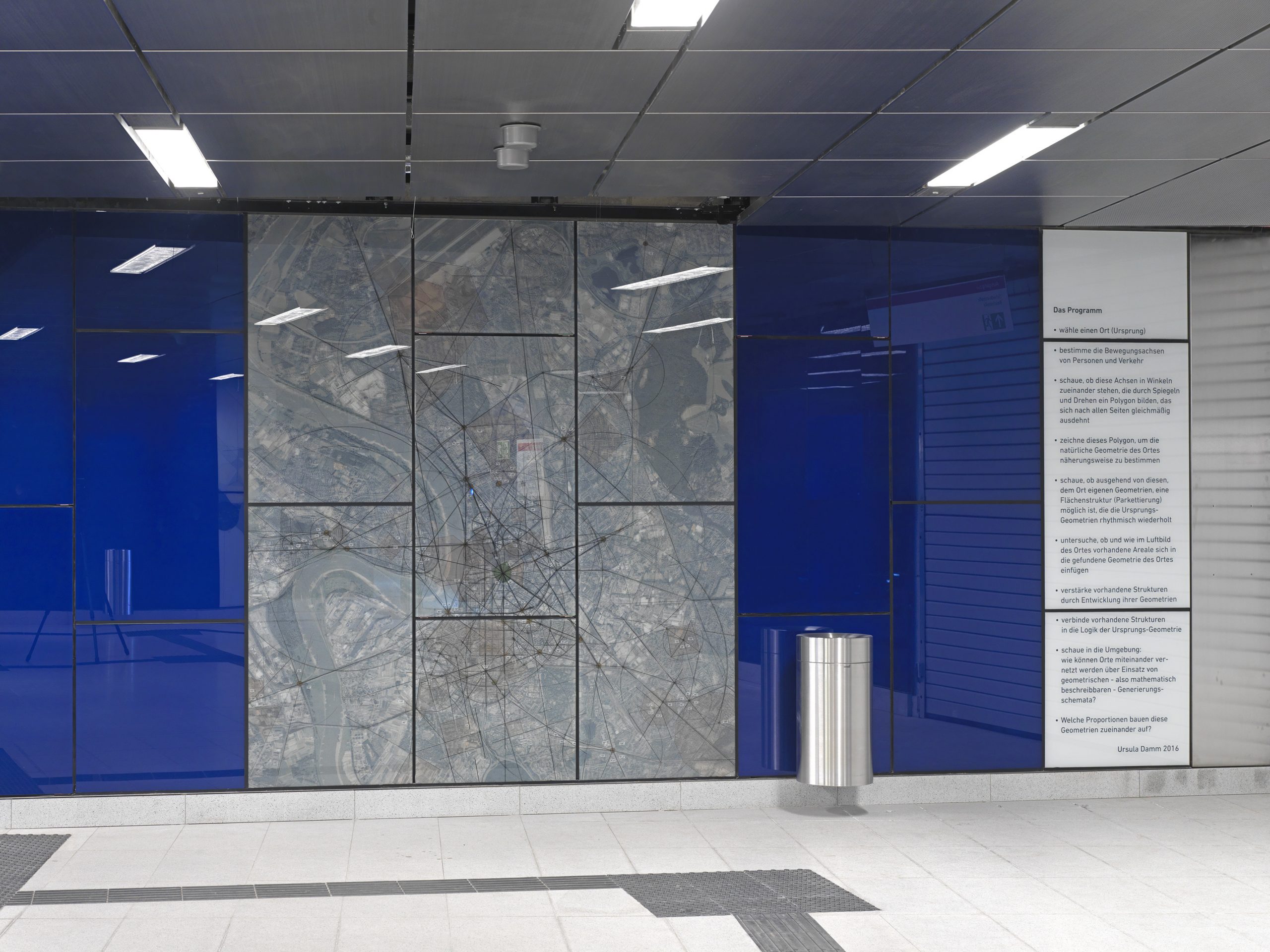
In the east concourse is the aerial image of the city of Düsseldorf that was analysed according to the geometric concept.

As excerpts from this aerial picture, 16 locations in Düsseldorf were interpreted at the level of a local aerial image. These urban areas were described with regular polygons as energy centres which fitted themselves together through the development of the city architecture (see the text on the concept of the generated patterns).
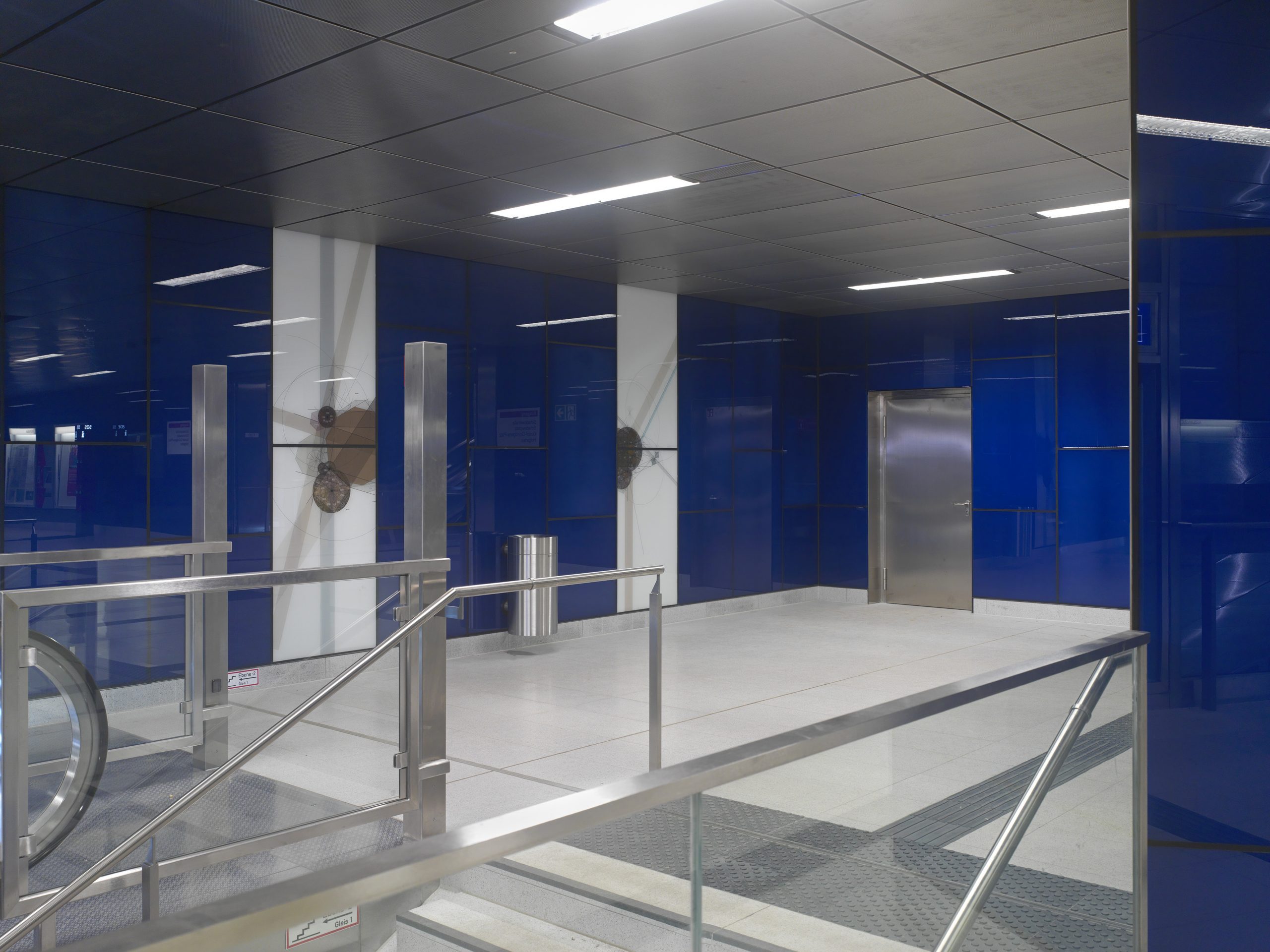

The fine structure of the patterns juxtaposes both the sensibility of nature and the human, formative gestures against the massive edifice, calling to mind a mode of formation that creates sweeping interconnections through the symbiotic organisation of a multitude of individual elements. In doing so, this formative process completes the social principle through which individuals experience their effect on the whole.
The pattern drawings are generated in slow steps: First a line drawing is created over the image of the city. As this progresses, important motion axes of traffic and pedestrians are emphasised. The areas these axes enclose become polygons. At this point, the angles of the lines and axes are examined in the search for whole-number fractions of regular polygons.
The smallest polygon integrating all of the symmetries at the location (for instance, five-angled and four-angled fragments would be assembled into a 20-sided polygon) is then used to describe an intersection.
A subsequent step is the search for connections (network) between large neighbouring polygons.
Work with the aerial images revealed that the city centre has very small polygons, while outer areas have a significantly more expansive structure. Thus, density is indicated by the presence of small polygons and complex symmetries. Often, the transition from non-rectangles to rectangles can indicate historical breaks in the urban landscape. In this way, the interpretations represent a study of the settlement and planning history of the city.
The sound installation
The generative video installation interprets traces of movement created by geometric “agents.” The activity of these agents is translated into sounds which track the visual artefacts. As such, the sounds form the noise that the virtual artefacts generate in their world, and thus represent and extended artistic “level of reality” of the installation.
PROGRAM
- Select a location (origin)
- Determine the movement axes of people and traffic
- Look to see if these axes are at angles to one another, which when mirrored and rotated can form a polygon, the sides of which all extend outward equally
- Draw this polygon to approximate the natural geometry of the location
- Look to see if, starting from this, the intrinsic geometries of the location can form a surface structure, (tessellation) that periodically repeats the original geometries
- Determine whether and how, in the aerial image of the location, the areas fit together in the revealed geometry of the place
- Enhance existing structures by developing their geometries
- Connect existing structures into the logic of the original geometry
Konzept: Ursula Damm
Programmierung: Felix Bonowski
Sound: Yunchul Kim
Article on the production of the artwork in german
Turnstile article english translation
Text von Georg Trogemann über den Besuch der Eröffnung
official website Stadt Düsseldorf
English text on the production of the artwork
